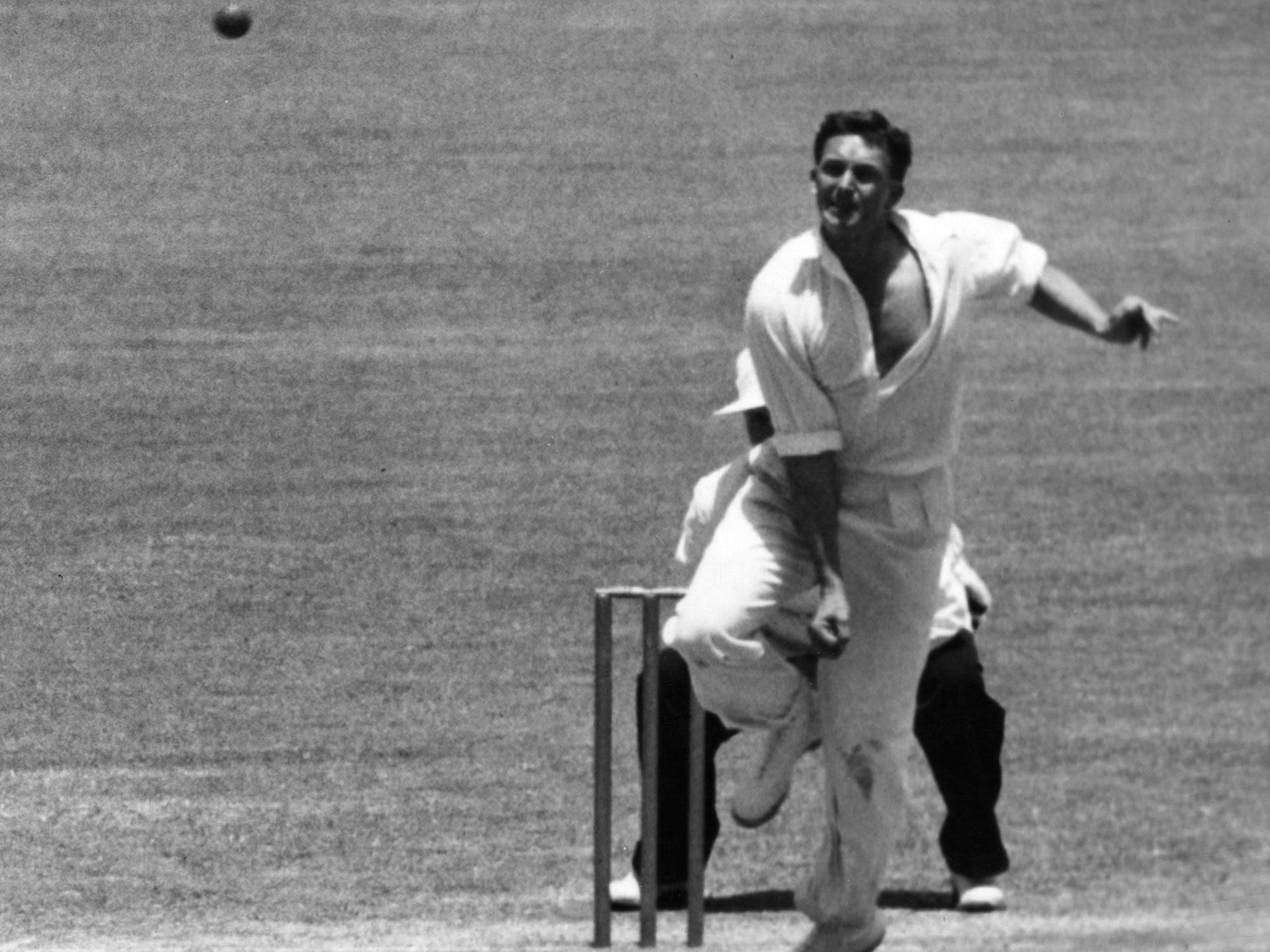Richie Benaud: A custodian of the art of leg-spin, he put cricket in a debt to him which it will never come close to servicing
Benaud mastered the art of the 'Flipper' and the leg-slip, before his true legacy came in passing such wisdom to future generations

In method and philosophy Richie Benaud was both the most classical of leg-spinners and a pioneer of cricket's most difficult art. Whereas his protégé Shane Warne would amble up to the crease slowly, Benaud trotted in with a very sprightly jog, on an angle of around 30 degrees. All this was aimed at giving him the tools for a huge pivot at the crease from a very side-on action. In this respect he was straight out of the textbook, looking over a high left arm, back foot virtually parallel to the popping crease, body coiling and uncoiling in preparation for a full sweep of the arm.
This elegant delivery stride presented him with a problem, however. As a tall man bowling with a high arm action, Benaud found that he tended to impart more top spin than side spin. The perfect leg-break probably has a roughly even quotient of both, with the seam spinning on an axis facing third man when released. But Benaud tended to release the ball with the seam straighter, pointing more directly down the wicket. This had two effects. First, it reduced the amount of turn he achieved; and, second, the extra top, or 'over', spin meant the ball dipped sharply at the end of its trajectory, causing it to bounce steeply - and so deny him many lbw decisions he thought his due.
This hurt. He had heard that Peter May once said of a bowler in the nets that "He bowled me a Benaud" - by which was meant a ball that didn't turn much. So Benaud came up with a plan. He made a virtue of the extra bounce by using a leg-slip long before it was fashionable, bowling from a wide angle over the crease on a line of middle and leg stump. And he was also among the best exploiters of a silly mid-off position, encouraging batsmen to drive leg-breaks, then slipping them the top-spinner and watching with glee as the extra bounce meant they got to the shot early and looped the ball straight to the fielder.
His other response was to master the flipper. On the 1956 tour of England, he found himself talking to Bruce Dooland, another distinguished Australian leg-spinner, in the dressing room at Trent Bridge during the Saturday of a tour match. Benaud explained his woes. Dooland asked him to come along on Monday, where he'd teach him the flipper. Eventually, Benaud mastered it. This delivery, delivered with a more round-arm action, has back spin rather than top spin, so floats on to a fuller length before skidding into the right-hander. Unlike earlier flipper merchants, such as the great Kiwi-turned-Australian Clarrie Grimmett, Benaud varied the angle at which he released the ball. Whereas for Grimmett and Dooland the seam spun like an equator on the ball, Benaud would sometimes release it straighter, meaning he occasionally achieved in-swing.
The key was variation. As Benaud himself wrote to me a few years ago: "The flipper I bowled, which was taught to me by Bruce Dooland at Trent Bridge in 1956, [generally] had the seam horizontal. It is true that my flipper often moved in the air to right-handed batsmen, but it would have been unwise to hold the seam in the same position all the time because the batsman would straight away pick it as the flipper. Common sense dictated that I often varied the angle of the seam."
Common sense had also been abundant when, back in 1953, he sat down with Tiger O'Reilly, a hard-drinking beast of an Australian who, together with Grimmett, had been the outstanding bowler of the 1930s. The history of mystery, as we fans of spin call it, is full of these glorious meetings between Twirlymen, where secrets are shared, and wisdom imbibed. This meeting took place in a Scarborough hotel. O'Reilly shared his six fundamentals of spin.
First, "give the batsman absolutely nothing". Second, "develop one ball as your stock ball and perfect it." Third, "that ball should be your leg-break, and from your point of view it should be both an attacking and defensive weapon." Fourth, "don't try to take a wicket every ball." Fifth, "never forget, even for one moment, that the batsman is an enemy on the field. Sixth, "bear in mind that almost every captain under whom you play will be a batsman... with very few exceptions they [batsmen] know nothing about the technique of spin bowling".
Later in life, Benaud would be renowned for how he spoke. As a young man, it was his skill at listening that reaped reward. Young Benaud imprinted these lessons on his memory, acted on them, and achieved greatness on the field. But his true legacy came in passing on such wisdom as he gleaned to future generations, seeing himself as a mere steward of the most noble calling in cricket, which is the art of leg-spin. It was in this particular respect - knowing that he was custodian of a great tradition, and member of a special club - that Benaud put cricket in a debt to him which it will never come close to servicing.
Amol Rajan, Editor of The Independent, is author of 'Twirlymen: the Unlikely History of Cricket's Greatest Spin Bowlers', published by Yellow Jersey.
Subscribe to Independent Premium to bookmark this article
Want to bookmark your favourite articles and stories to read or reference later? Start your Independent Premium subscription today.

Join our commenting forum
Join thought-provoking conversations, follow other Independent readers and see their replies